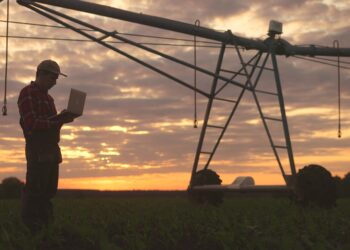It’s been a rough three years. The globe effectively shut down as a once-per-century pandemic claimed millions of lives, while on the business front, the US saw a layoff wave incomparable in modern history. Working our way back to a relative baseline has come with hiccups, like a huge shift to remote work, and then a semi-return to normal. As a mark of what a long journey it’s been, the World Health Organization just today declared COVID is no longer an emergency, after more than three years. But for a while there, amid the panic and tragedy, workers were somehow more productive than ever. Not anymore.
The US has now had five consecutive quarters of year-over-year declines in productivity, according to research from EY-Parthenon, using data from the federal Bureau of Labor Statistics. That has never happened before, in data going back to 1948.
To figure out why this is happening, Fortune spoke with Gregory Daco, chief economist at EY-Parthenon, the global strategy consulting arm of one of the “Big Four” accounting and consulting firms. Daco has written and spoken extensively about remote work and the pandemic’s effect on the labor market. He said the low productivity reflects our current environment, defined by high inflation. Remote work is a real thing to consider, Daco said, but it’s not the only factor.
The drop in productivity, Daco tweeted Thursday, is exacerbating compensation pressures and pushing up unit labor costs. “The difficulty is that there is no magic productivity wand,” he wrote. “And cost-cutting via layoffs and wage growth compression is often ‘easier’ and faster to execute.”
Breaking down the numbers
US productivity plunged 2.7% in the first quarter of this year compared to last year, EY found. That’s a 0.9% year-over-year drop. Concurrently, quarter-over-quarter output grew slightly (0.2%), and hours worked grew 3%. That means people are working longer hours and barely putting out more products, because they just aren’t as productive as they used to be.
“When you have an environment in which output is outpacing labor growth, that’s an environment of stronger productivity,” he explains to Fortune. “When you have the opposite, when output growth is sluggish but labor growth is strong, you have a weak productivity environment.”
A rebound in productivity will be key to solving many of the economy’s current issues, Daco said, as that would lift supply and thereby reduce inflationary pressures.
Over the past five or six quarters, he says, economic activity has been sluggish, even as the country has seen a resilient labor market and continued job gains. People are working longer hours, he adds, so labor utilization has also been higher. Unit labor costs grew 6.3% this quarter, while compensation grew 3.4%. That combination has created conditions for the perfect storm: Weak productivity for five quarters straight, for the first time since post-World War II.
Daco acknowledged hearing from clients that remote work could be making employees, well, work less hard. “From our clients across sectors, we hear similar stories of reduced productivity because of the new work environment,” Daco says. He acknowledged that imperfect hybrid arrangements could be a possible cause of the productivity plummet.
CEOs such as JPMorgan’s Jamie Dimon and Salesforce’s Marc Benioff have argued that in-person workers are simply doing more work, better than their remote colleagues. Dimon says long-term remote work just doesn’t work for most employees; while Benioff says workers in the office consistently perform better. Both the bank and the tech giant have waffled on return-to-office mandates, but both have yielded to a hybrid plan—at least for now.
Daco, however, highlighted another factor, which he says economists often underestimate, is that, over the past 18 months, the churn of labor has been “tremendous.” He points to recent BLS and JOLTS reports, which have found that the number of job openings, hire rates and quit rates have all reached record highs.
“That tells you it’s been very difficult for employers to, essentially, train their employees and bring them up to par with the productivity levels that would have been deemed normal pre-pandemic,” he says.
When the pandemic hit, it brought a combination of early retirement, a mass exit from the workforce, and an avalanche of job-switchers, a phenomenon alternately called “the great resignation” and “the labor shortage.” Taken together, it created a dearth of productivity.
“Because people were job-hopping so regularly, there wasn’t really a chance to bring them up to the speed, or productivity, that a former worker would’ve had,” he says. In other words: the outsize rate of churn has been a key, if under-appreciated, factor in sluggish productivity.
Nonetheless, he’s optimistic numbers will trend towards normal again this year.
“Productivity is the key out of this mess we’ve been in,” he says. He characterizes the current environment as one of constraint: supply-chain constraint, labor constraint, and capital constraint. Increased productivity would alleviate each of those concerns—as well as cost pressures.
“One of the reasons sluggish productivity hurts the economy is not just that it limits supply; it leads to inflationary pressures,” he says. “Think of it like: a working employee has a cost. They have to be paid. That wage is offset by their productivity. What matters to an employer is how much they’re paying per unit of output. That’s unit labor cost.”
Generally, it’s difficult to ascertain how flexible work will impact productivity, and in turn, unit labor costs. But “the whole idea of remote work and flexible work is to allow people to be more productive,” Daco says.
Granted, that hasn’t always worked out according to plan. Workers have been using flexible hours to do things they otherwise wouldn’t have time to do during the workday—like laundry and grocery shopping—or would have had to delegate to someone else—like childcare or elderly care. Those are circumstances Dimon and Benioff would point at to argue remote workers are less productive because they’re doing chores instead of, well, working.
Now, Daco says he’s optimistic that workers and bosses are coming toward an equilibrium, where all sides are trying to be as efficient as possible to get work done in their desired amount of time. That would mean a gain in productivity, he adds.
Addressing the trust factor
The problem with flexible work is, Daco says, it all comes back to trust.
“Do you trust your employees to be working and producing the same as they would be if they’d been in the office?” he asks. “Some leaders believe that. Whether being in the office is more efficient depends on a number of things—your sector, the population you employ.”
But for a lot of white-collar jobs, unlike manufacturing jobs, the fact is inescapable: the office isn’t essential. Work can be done remotely. The question is, he says, is there trust that employees are actually working?
The answer may be vital. As the labor market cools, employment growth diminishes, and the broader economy slows down, “that will gradually transfer bargaining power back towards the employer, and away from the employee,” Daco says.
As it stands, Daco said he thinks a hybrid arrangement will likely remain, but in-office cohorts will come out on top.
“We’ll probably see more weight towards three to four days in the office, rather than one or two, if the labor market slows,” he says. “I don’t think it will be all or nothing, necessarily.”
That will have big implications for the Fed and monetary policy, he says. “All else being equal, we’ll have high inflationary pressures, so the Fed will likely be more hawkish.” The rumbling banking crisis underscores the hazards to the economy of a hawkish Fed.
Productivity, in Daco’s view, is the missing part of the puzzle, because it will relax inflationary pressures. “In the absence of that productivity growth, we’ll see the Fed act more hawkish than doveish.”
By Jane Their / Fortune












